A trip to Stalin's hometown of Gori makes an easy half-day trip out of Tbilisi. The ride on the marshrutka (from Didube bus station) was on our first freeway since China. The helpful signs on the International Highway were in English and we saw signs for Istanbul and Teheran! Our immediate destination was a relatively modest 75 km out of Tbilisi and we were duly dropped off outside the home of the ex-dictator of the ex-SU. It is now a museum full of photographs chronicling his life story. Add some personal artifacts (military jacket, favorite cigarettes and pipe), his railway car, death mask and gifts received from others, you can spend a good hour or so contemplating the man.
We were stopped dead on our tracks by this astounding display at the foot of the stairs leading up to the museum hall
. It illustrates the power of negative self-reference and is worth quoting in full:
According to different estimates, during the course of its existence, the Soviet empire claimed the lives of 15 to 40 million people. This museum was launched at the peak of Stalin's purges in 1937 by one of his henchmen, Lavrent Beria, to immortalize Josef Stalin himself. In that very year, according to Soviet statistics, which were significantly deflated, 353,074 people were executed throughout the Soviet Union, amounting to 1000 executions a day. This museum is a typical example of Soviet propaganda and falsification of history. Throughout various stages of Soviet history, the expositions were modified or refocused, but the objective of this museum remained unchanged - to legitimize the bloodiest regime in history.
With this simple device, the rug is pulled off the feet of the original creators of the museum and their subject is held up for scrutiny by 21st century minds, of which several were in attendance from schools nearby
. If the current management had altered the text of every display in the museum, they could not achieved so profound a transformation on the museum's impact. On the flip side, should the unthinkable happen and a future regime devoted to Stalinism should come to power, all they have to do is to remove the above display to reverse the transformation. But as it stands, the above message should be useful even to those visitors who may have yet to make up their minds on the man and what he stood for.
All visitors are escorted through the museum and we had a young woman whose indecipherable English and rushed delivery prevented any content from being registered. Thankfully, we were allowed back into the museum unescorted after she finished her rapid round. The guidebooks indicated that the escorts do gloss over some of the more controversial content. But to her credit, she did mention that Lenin tried to deliver a negative recommendation on Stalin when he was terminally ill, but Stalin managed to suppress that and ensure his succession to the highest post in the CPSU
. If that recommendation had come to light in time, 20th century world history may well have been quite different.
Inside the complex is Stalin's modest childhood home and a little detail there deserves to be recalled here. The adult Stalin asked his mother why she beat him severely when he was a boy. Her response: That was completely necessary. See how well you have turned out!
The unfortunate story of his son from his first wife is also worth mentioning as it reveals a side of Stalin's character that may not be well known. During their ill fated Stalingrad campaign (excellently documented in the chilling book by A. Beevor) the Nazis captured Stalin's son and tried to exchange him for their captured commander Paulus. Stalin's verdict: I cannot exchange a mere lieutenant for a marshal! The doomed young man was killed by a bullet while in captivity.
Outside the museum, the Gori fortress loomed high over the town that was big enough that we needed a marshrutka ride to the main bus station for our return trip to Tbilisi
. Fortified with some kartushka (potato) and fasol (beans) pies, we retraced our journey back on the International Highway. But we had the driver drop us off on the freeway to visit the historic town of Mtskheta (pronounced s'k'heta) just outside Tbilisi.
Mtskheta is the spiritual center of Georgia, containing some of its oldest and most important churches. It was the capital of eastern Georgia from the 3rd to the 5th century AD, when King Vakhtang Gorgasali moved it to Tbilisi. It is located at the meeting of the Mtkvari and Aragvi rivers with the nearby Jvari Monastery watching from high above a mountain perch nearby.
Mtskheta's Svetitskhoveli cathedral is the setting for the most important ceremonies in the country. This was our first destination on alighting from the marshrutka and climbing up the steps to the city road. We had second thoughts about walking all the way to the cathedral and asked a woman on the lonely road and she confirmed that we were going in the right direction
. She quickly added that we should wait for a marshrutka to get there. It duly arrived and took a while to get to the cathedral. She had the right idea as the long walk would have been tiring and would have shortened our time in Mtskheta.
At the cathedral, once we got past the palms outstretched for alms, we saw several wedding parties in full regalia with nattily dressed grooms (with ceremonial swords) and brides in full costume. We walked into the tourist office for some guidance and got plenty on Mtskheta and the rest of Georgia. We also learnt that one of the grooms was Georgia's star singer Gigi Dedalamazishvili. The interior of the church was crowded with the wedding couples and well dressed guests and we had to squeeze around them in our traveling gear (!). The priests were busy conducting a wedding in one of the interior altars and the star couple had to wait their turn. Near the entrance was a well and this was being used for several simultaneous baptisms being performed on handheld youngsters who were screaming their protest at being dunked (ceremoniously?) into the water without warning
. The wet babes were all yelling out for their mothers, but custom demanded that they be held by their male parent and this was not at all to their liking. Particularly with a heavily robed and heavily bearded priest looming large nearby chanting holy words.
According to legend, Christ's robe (brought to Georgia from Jerusalem by Elias who was at the crucifixion) is supposed to lie in the nave beneath the square, tower-like pillar. The present structure dates from the 11th century and suffered damage in the 14th century at the hands of the omnipresent Timur. The murals inside date from the 16th to 18th century.
The name Svetitskhoveli means 'Life-Giving Column' and refers to the wooden column which rose by itself into the air and returned to the earth after St. Nino (Geogia's patron saint who converted the nation to Christianity in the 4th century) prayed the whole night. The image of an angel lifting the column while watched by St. Nino, King Mirian and Queen Nana can be seen in several churches all over Georgia
.
We also visited the small Antiochy church by the riverbank and the larger Samtavro Church which are both part of nunneries today. We emerged from Svetitskhoveli past the brides being photographed on the lawns, and the festive horse carriages and decorated cars that were honking loudly in celebration and proceeded to Samtavro where the atmosphere was antithetical to the festive atmosphere that prevailed at Svetitskhoveli. Samtavro is where King Mirian and Queen Nana are buried and this church had a more solemn feel to it.
While we waited for the marshrutka to Tbilisi, we spotted a cafe outside and walked towards it hoping for a caffeine fix. Unfortunately, the owner was mid-way through a snack and she had to interrupt her meal to serve us. The elderly gentleman who was seated next to her got up after a while and approached us asking the standard question. At our reply, he seemed to struggle to find the right words to say. We realized that he was drunk out of his mind which further hindered his quest. He eventually blurted out "I love you very much!". He probably wanted to say something else and these were the only English words that his drunken state would allow him to recall. We thanked him for the sentiment as he staggered out of the cafe.
Dzhugashvili and Svetitskhoveli
Saturday, October 20, 2012
 Gori, Georgia
Gori, Georgia
Other Entries
-
67The Long Road to Bishkek
Sep 1832 days prior Bishkek, Kyrgyzstanphoto_camera14videocam 0comment 3
Bishkek, Kyrgyzstanphoto_camera14videocam 0comment 3 -
68Seven Bulls and a Broken Heart
Sep 2030 days prior Karakol, Kyrgyzstanphoto_camera13videocam 0comment 2
Karakol, Kyrgyzstanphoto_camera13videocam 0comment 2 -
69At Song Kul Lake - An Unforgettable Experience
Sep 2228 days prior Kochkor, Kyrgyzstanphoto_camera23videocam 0comment 0
Kochkor, Kyrgyzstanphoto_camera23videocam 0comment 0 -
70Back to Bishkek
Sep 2327 days prior Bishkek, Kyrgyzstanphoto_camera0videocam 0comment 5
Bishkek, Kyrgyzstanphoto_camera0videocam 0comment 5 -
71Almaty
Sep 2624 days prior Almaty, Kazakhstanphoto_camera16videocam 0comment 1
Almaty, Kazakhstanphoto_camera16videocam 0comment 1 -
72Day Trip To Turkistan
Sep 2822 days prior Shymkent, Kazakhstanphoto_camera8videocam 0comment 1
Shymkent, Kazakhstanphoto_camera8videocam 0comment 1 -
73The Border Crossing You Dont Want To Repeat
Sep 2921 days prior Tashkent, Uzbekistanphoto_camera5videocam 0comment 4
Tashkent, Uzbekistanphoto_camera5videocam 0comment 4 -
74Some History Lessons
Oct 0218 days prior Tashkent, Uzbekistanphoto_camera5videocam 0comment 2
Tashkent, Uzbekistanphoto_camera5videocam 0comment 2 -
75From Slave Market to Museum
Oct 0416 days prior Khiva, Uzbekistanphoto_camera14videocam 0comment 1
Khiva, Uzbekistanphoto_camera14videocam 0comment 1 -
76How Much Renovation is Just Right?
Oct 0614 days prior Bukhara, Uzbekistanphoto_camera32videocam 0comment 3
Bukhara, Uzbekistanphoto_camera32videocam 0comment 3 -
77Timur Land
Oct 0911 days prior Samarkand, Uzbekistanphoto_camera28videocam 0comment 1
Samarkand, Uzbekistanphoto_camera28videocam 0comment 1 -
78Goodbye To The 'Stans
Oct 1010 days prior Tashkent, Uzbekistanphoto_camera6videocam 0comment 2
Tashkent, Uzbekistanphoto_camera6videocam 0comment 2 -
79Still In Asia Or Is This Europe?
Oct 137 days prior Baku, Azerbaijanphoto_camera28videocam 0comment 1
Baku, Azerbaijanphoto_camera28videocam 0comment 1 -
80Foothills Of The Caucasus Mountains
Oct 146 days prior Lahic, Azerbaijanphoto_camera16videocam 0comment 2
Lahic, Azerbaijanphoto_camera16videocam 0comment 2 -
81Vikings Originally Came From Azerbaijan?
Oct 164 days prior Sheki, Azerbaijanphoto_camera13videocam 0comment 1
Sheki, Azerbaijanphoto_camera13videocam 0comment 1 -
82An Azerbaijani Family
Oct 164 days prior Sheki, Azerbaijanphoto_camera0videocam 0comment 3
Sheki, Azerbaijanphoto_camera0videocam 0comment 3 -
83A Change of Faith
Oct 191 day prior Tbilisi, Georgiaphoto_camera16videocam 0comment 3
Tbilisi, Georgiaphoto_camera16videocam 0comment 3 -
84Dzhugashvili and Svetitskhoveli
Oct 20 Gori, Georgiaphoto_camera17videocam 0comment 2
Gori, Georgiaphoto_camera17videocam 0comment 2 -
85A Border Runs Through It
Oct 211 day later Davit Gareja, Georgiaphoto_camera15videocam 0comment 2
Davit Gareja, Georgiaphoto_camera15videocam 0comment 2 -
86In the Greater Caucasus Mountains
Oct 233 days later Qazbegi, Georgiaphoto_camera15videocam 0comment 1
Qazbegi, Georgiaphoto_camera15videocam 0comment 1 -
87The Pink Capital of Armenia
Oct 266 days later Yerevan, Armeniaphoto_camera22videocam 0comment 2
Yerevan, Armeniaphoto_camera22videocam 0comment 2 -
88Colors Of The North - Dilijan and Lake Sevan
Oct 277 days later Dilijan, Armeniaphoto_camera14videocam 0comment 2
Dilijan, Armeniaphoto_camera14videocam 0comment 2 -
89The Armenian Apostolic Church
Oct 288 days later Echmiadzin, Armeniaphoto_camera13videocam 0comment 0
Echmiadzin, Armeniaphoto_camera13videocam 0comment 0 -
90Two Monasteries And A Winery
Oct 299 days later Areni, Armeniaphoto_camera9videocam 0comment 0
Areni, Armeniaphoto_camera9videocam 0comment 0 -
91Tatev (Give Me Wings)
Oct 3010 days later Goris, Armeniaphoto_camera10videocam 0comment 0
Goris, Armeniaphoto_camera10videocam 0comment 0 -
92The Nagarno Karabakh Republic
Oct 3111 days later Stepanakert, Azerbaijanphoto_camera18videocam 0comment 2
Stepanakert, Azerbaijanphoto_camera18videocam 0comment 2 -
93Homer in Turkish
Nov 0112 days later Tbilisi, Georgiaphoto_camera1videocam 0comment 1
Tbilisi, Georgiaphoto_camera1videocam 0comment 1 -
94From Caspian Sea To Black Sea
Nov 0314 days later Batumi, Georgiaphoto_camera11videocam 0comment 1
Batumi, Georgiaphoto_camera11videocam 0comment 1 -
95A Short Distance, But A World Apart
Nov 0415 days later Trabzon, Turkeyphoto_camera16videocam 0comment 1
Trabzon, Turkeyphoto_camera16videocam 0comment 1 -
96Rock-cut Tombs and a Deep Valley
Nov 0617 days later Amasya, Turkeyphoto_camera11videocam 0comment 3
Amasya, Turkeyphoto_camera11videocam 0comment 3 -
97Cold and Rainy in the Capital
Nov 0819 days later Ankara, Turkeyphoto_camera14videocam 0comment 4
Ankara, Turkeyphoto_camera14videocam 0comment 4 -
98Ottoman Architecture and Computer Architecture
Nov 1021 days later Safranbolu, Turkeyphoto_camera15videocam 0comment 2
Safranbolu, Turkeyphoto_camera15videocam 0comment 2 -
99Fairy Chimneys and Whirling Dervishes
Nov 1223 days later Goreme, Turkeyphoto_camera26videocam 0comment 6
Goreme, Turkeyphoto_camera26videocam 0comment 6 -
100Turquoise Coast
Nov 1526 days later Fethiye, Turkeyphoto_camera18videocam 0comment 2
Fethiye, Turkeyphoto_camera18videocam 0comment 2 -
101Aphrodisias
Nov 1728 days later Geyre, Turkeyphoto_camera21videocam 0comment 6
Geyre, Turkeyphoto_camera21videocam 0comment 6 -
102Hierapolis
Nov 1829 days later Pamukkale, Turkeyphoto_camera22videocam 0comment 2
Pamukkale, Turkeyphoto_camera22videocam 0comment 2
Comments
2025-05-22
Comment code: Ask author if the code is blank

 Gori, Georgia
Gori, Georgia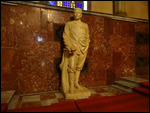
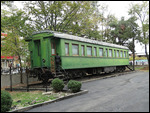
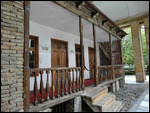


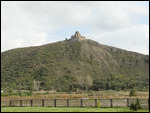
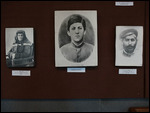








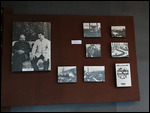
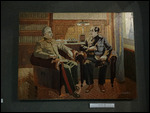
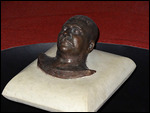
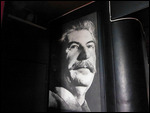
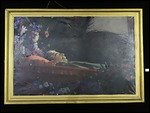
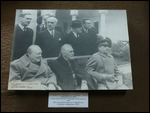
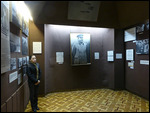


Ramesh
2012-10-30
Why on earth to a Stalin museum ???
Having said that I should keep my mouth shut, having gone to see Mao's embalmed body.
parleusted
2012-10-31
@Ramesh: V saw almost everything else in Beijing but Mao's mausoleum. But M made up for that by completing that.